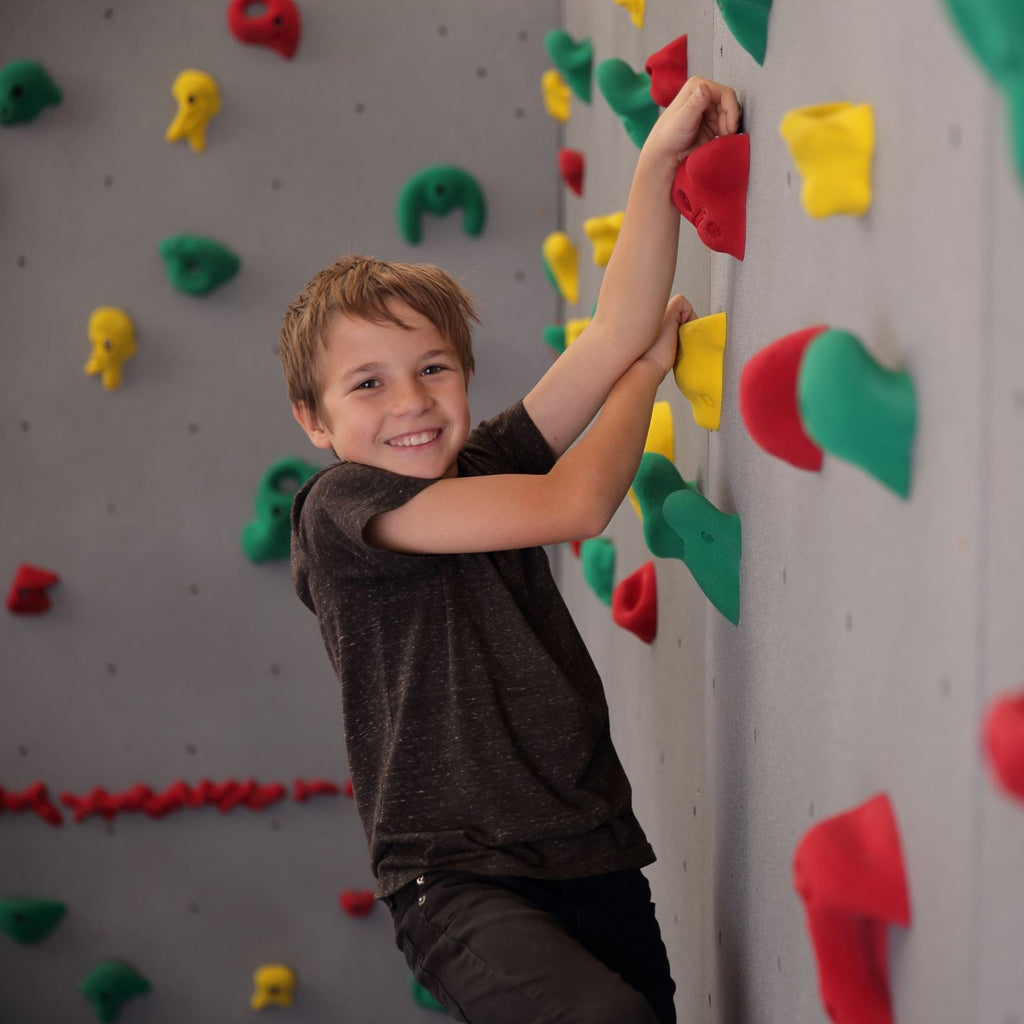
Back-to-Basics Series: Five Quick Ways to Refresh Your Climbing Wall
We are featuring a Back-to-Basics Series for our weekly blog posts during the month of November. These posts are ideal for those with new climbing programs or new climbing instructors. They’re also great refreshers for experienced instructors, or those in need of some retraining. In case you missed them, in week one, we featured safety rules and day one activities. Week two detailed how to install, remove and move hand holds. This week, we are resharing a popular post from 2021 about how to easily refresh your climbing wall.
Five Quick Ways to Refresh Your Climbing Wall
Adding new experiences to your climbing wall by introducing new challenges and activities helps keep your climbing wall exciting and engages climbers over time. Since we know that you’re busy, we are offering these five quick ideas to refresh your climbing wall.
Rotate your hand holds.
Our hand holds are versatile and designed to be used from all sides. Some positions are easier than others to grasp. Using the Allen wrench that came with your climbing wall, one by one, loosen some hand holds and rotate them 45 – 180 degrees. Play around with the options you get when you rotate the holds and once you choose a new position, tighten the holds. This will create an entirely new climbing experience and takes a lot less time than removing holds and setting all new climbing routes.
How low can you go?
Climbers tend to want to climb as high as possible, even on a Traverse Wall®. Encourage your climbers to climb low, as low as they can go, while still remaining on the wall. This will challenge them in new ways, even if the activity is a familiar one.
Use the climbing wall in sections.
Instead of using your entire climbing wall for an activity, divide it into sections and have partners or small groups use each section simultaneously. You can mark the sections with tape on the climbing wall or with soft cones on the mats. One 4’x8’ section is great for partner activities like Twister®. Sections of two or three panels can be used with small groups for activities such as Add On.
Change sides or start in the middle of the wall.
Sometimes start activities from the left side, with climbers climbing to the right. Other times start activities from the right side, with climbers moving to the left. This challenges participants to lead with different sides of the body. You can also start activities in the middle of your climbing wall and have climbers move to each end.
Reflect and share.
At the end of a climbing session, save a few minutes to discuss the experience. Ask one question and allow a few minutes for climbers to reflect, share and discuss. Here are some possible questions:
- What was your favorite part about climbing today?
- What was the hardest part about the climbing activity?
- Describe a feeling you had on the climbing wall today. How did it help or hinder your climbing?
- If you had a chance to do the activity again, what would you do differently?
- What part did teamwork play in climbing today?

Leave a comment